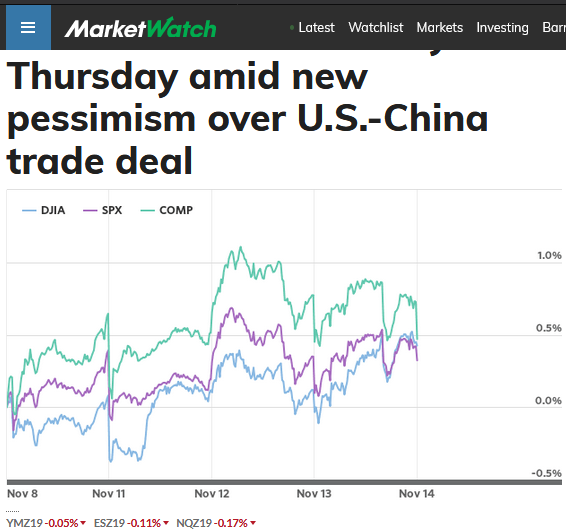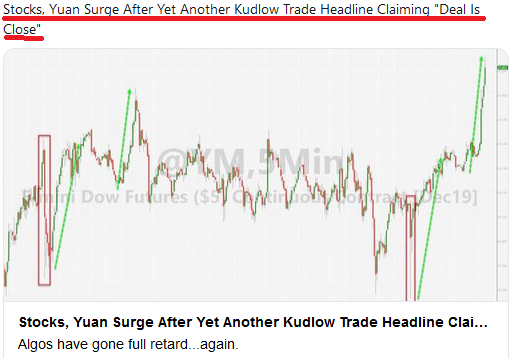Guardate lo sguardo di Greta nella foto: pur avendo soltanto 11 anni, lei si rende conto che non è possibile andare avanti con i vecchi metodi, i vecchi arnesi, le vecchie pratiche: il Mondo ha bisogno di rinnovarsi, di cambiare metodi ed atteggiamento, di muoversi verso il futuro.
A molti investitori, questo non risulta: stanno ancora lì’, con l’industria del carbone e i treni a vapore e il transatlantico Titanic (di cui vi parlammo solo sette giorni fa).
I giornali in Italia fanno pubblicità (senza dichiaralo: pubblicità occulta, naturalmente) all’accordo tra la società di consulenza per gli investimenti Money Farm e Poste Italiane. Vi invitiamo a visitare il sito di Money Farm, ad apprezzarne la cura dell’estetica, ed anche di approfondire i contenuti di quell’offerta di servizi.
Potrete facilmente riscontrare che quelle proposte (come molte altre, nel settore che si auto-definisce Fintech in Italia) sono basate su una asset allocation tradizionale, e che hanno come modelli di riferimento strumenti che furono sviluppati, testati (e bocciati) negli anni Novanta, ovvero trent’anni fa (ad esempio, Black - Litterman).
Vista la pubblicità che viene fatta a questi strumenti, può essere utile mettere a confronto questa proposta con ciò che nel resto del Mondo si dice e si scrive, in merito alle tradizionali tecniche di asset allocation.
Per questa ragione, proponiamo alla lettura un articolo molto significativo pubblicato pochi giorni fa sul Financial Times. L’articolo parla di temi “alla moda”, come la Dynamic Asset Allocation (DAA), che noi non abbiamo la possibilità di approfondire in questo Post: lo faremo però, entrando nel dettaglio, in una pubblicazione riservata ai nostri Clienti.
Perché il tema delle strategie con le quali va gestito il portafoglio è un tema cruciale, in questa fase di mercato.
Anche se in questo Post non affronteremo gli aspetti più tecnici, resta chiaro il messaggio che emerge dall’articolo del Financial Times: l’industria dei Fondi Comuni è in difficoltà, va alla ricerca di nuovi contenitori, di nuove soluzioni di facciata, che consentano di riciclare vecchi prodotti (i Fondi Comuni di Investimento) appiccicandogli nuove etichette. Ed ecco perché l’articolo si chiude con un accenno ai “venditori di balsami miracolosi alle fiere”.
Is it my imagination or are there a rising number of heads of asset allocation lurking in the corridors of investment houses? They are intelligent, inquisitive and analytical but I cannot help wondering what value they add to long-term investing. Are they not just another iteration of active fund management, replacing active stock picking with active selection of asset classes?
Given how the numbers turned out for the former (stockpickers), maybe one can be a bit suspicious especially given the fact that the data sets manipulated by asset allocators are huge (the global economy plus long-term asset class return studies).
It also does not help that many key signals are influenced by non-economic actors which are hard to predict. Fancy guessing what US president Donald Trump might tweet next? Thought not.
At this point in my investigations I usually seek the counsel of academics. Some, such as William Sharpe, are obviously receptive to ideas of a more dynamic/active form of asset allocation, based in part on their research, whereas other academics, such as Elroy Dimson at Cambridge, seem to be wedded to boring old strategic asset allocation. Ideas around dynamic asset allocation (DAA) developed by the New Zealand super fund have emerged in the mainstream.
Big investors with serious asset liability management mandates started to embrace a more dynamic approach to asset allocation and investors generally became more demanding. Gone are the days when investors simply want the best risk adjusted returns. Now they want a set of assets tailored to a set of investment targets and needs, many involving minimum drawdown, liability matching and so on.
The cynic in me wonders whether this gave tactical asset allocators a chance to rebrand themselves as DAA. All sorts of strategies crept into the lexicon of asset allocation such as dynamic rebalancing, better benchmark design, risk factor allocations and downside protection. Gabriel Petre at the World Bank has penned an excellent overview of this new church of DAA in a paper called A Case for Dynamic Asset Allocation for Long Term Investors. His bottom line is that the “results so far seem to be mixed”.
His is a careful examination of various DAA strategies but two worries keep popping up. The first is the substance of the various strategies, many of which are overly dependent on mean reversion helped along by a range of signals. The catch is that in many cases investors end up waiting for valuation signals to reach extreme levels before initiating a position. And even if the signals themselves prove effective that does not mean it is any “easier to forecast future returns than before, as the uncertainty around these forecasts is quite large and the horizon is long”.
But for me the most formidable criticism is one of methodology — even if you find a great theory, back test it and then look for the signals, that does not mean it is easy to trade. It is also worth noting that most DAA approaches are data intensive, require very detailed risk budgets and force investors to have an incredibly disciplined approach to entry and exit points. Mr Petre suggests that from a governance perspective, investors need to be happy with long periods of inactivity, difficult to measure results, potential significant underperformance and a requirement for timely decision making.
One can see this played out in one concrete example which Mr Dimson cites. Volatility-based strategies have proved popular but as he points out, the half-life of many volatility eruptions is usually a matter of just a handful of days. For many institutional DAA investors by the time you have clocked the volatility signal and checked in with the right governance committee, it is probably too late. One final insight comes from the consultants who have been monitoring diversified growth funds (DGFs), many of which have varying degrees of DAA at work.
A KPMG report for the 10 years to December 2016 found “average DGF had risk-adjusted returns similar to that of equities and lower risk-adjusted returns than the equity bond portfolio”. Another report by Willis Towers Watson concluded that “high returns can be attributed to beta rather than alpha. Further, and crucially, we question how effective traditional, liquid DGFs will be if market returns are subdued”. So, I return to my initial observation. Is a new form of snake oil salesman patrolling the corridors of high finance? I await my invite to the Christmas shindig of the Guild of DAAs with trepidation.















